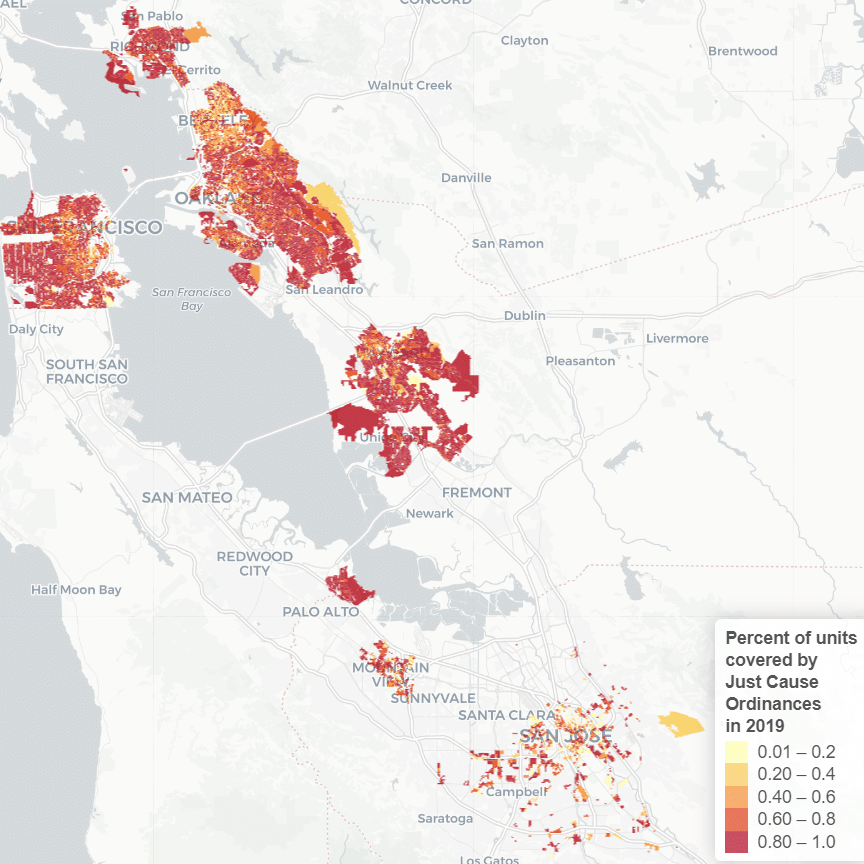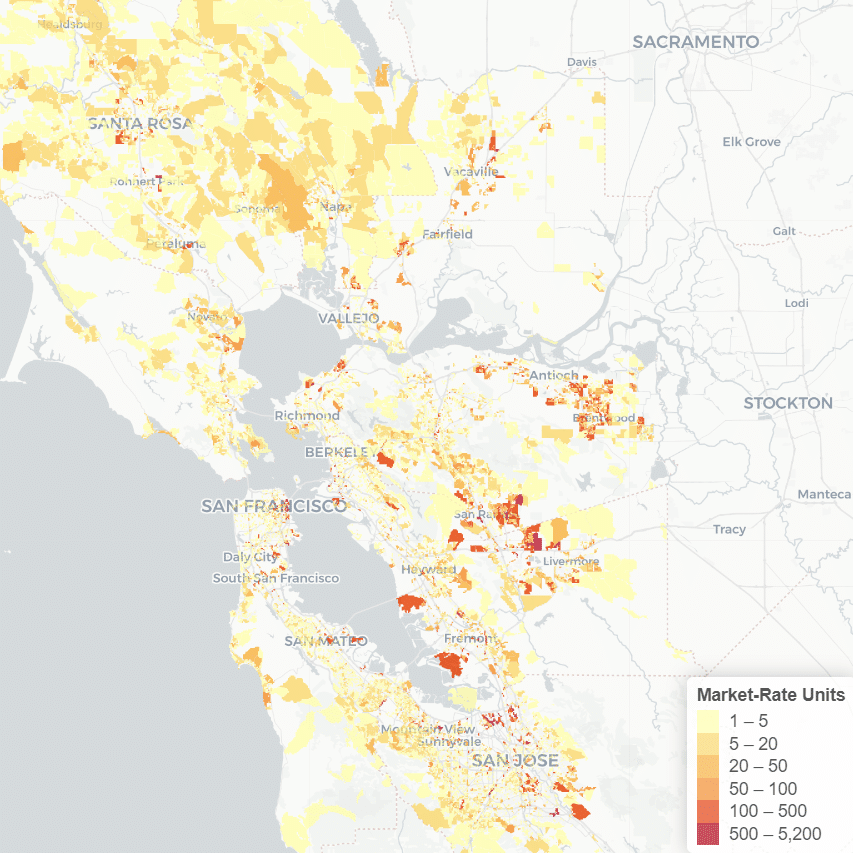Stable neighborhoods are characterized by low turnover where people can stay in place by choice in quality housing, contributing to family and community wellbeing, civic engagement, and the formation of social capital
How can we stabilize neighborhoods in the face of displacement pressures that threaten to push residents out of their communities? What are the right policy tools for neighborhood stabilization, and what will it take for diverse stakeholders to overcome political barriers and push things forward? On Tuesday, November 22, we came together at the San Francisco Federal Reserve Bank to discuss these questions on neighborhood stabilization in the first of a four-part workshop series on Investing without Displacement, co-hosted by the San Francisco Federal Reserve Bank, the San Francisco Foundation, and the Urban Displacement Project.
Miriam Zuk of the Urban Displacement Project opened up the workshop with an overview presentation on prosperity and inequality in the Bay Area, and on the jobs-housing mismatch and displacement, along with a discussion of potential tools for neighborhood stability – including rent control and just cause protections, but also spanning a broader set of policies and tools (see matrix).
Elizabeth Wampler of the San Francisco Foundation then moderated a panel comprised of San Mateo City Councilmember David Lim, Jennifer Martinez of Faith in Action, and Leah Simon-Weisberg of Tenants Together. The panel discussion looked at political barriers to action toward building more stable neighborhoods in the Bay Area, particularly in the context of the election season, and how these barriers might be overcome. This election season, there were eight renter protection ballot measures in six Bay Area cities; of these eight measures, four passed, including key victories for Measure JJ in Oakland, Measure V in Mountain View, and Measure L in Richmond. Moving forward, the panelists agreed that the severity of the housing crisis requires that diverse stakeholders come together in new partnerships.
So, who needs to be at the table?
- Grassroots political power:
- “The thing that we really need to take away [from this election season] is the strength of the grassroots movements across the Bay Area. And when we particularly look at city council races, folks who supported rent control won.” – Leah Simon-Weisberg
- Of the recent election season, Simon-Weisberg pointed out that the Alameda rent control ballot measure passed in the face of millions of lobbying dollars, and Martinez pointed out that, even in San Mateo and Burlingame where renter protections ballot measures lost, grassroots organizing awakened a sense of agency that should continue going forward.
- Local government:
- Panelists pointed out the need to get progressive candidates onto Bay Area city councils: renter protections “ordinances should come from our city councils [and will require] moral courage and leadership.” – Leah Simon-Weisberg
- David Lim explained how residents’ personal stories shifted his own mindset and behavior on San Mateo City Council:
- “To me this is not an economics issue. It’s a moral issue. It’s a conscience issue… I was originally an opponent of rent control and any policies that infringed on the rights of landlords, but I… came around after going out and meeting the people who were being displaced face-to-face… I as a council member could not sit by and watch my fellow residents having their rents increased 30%, 60%, 100%.”
- Real estate industry:
- Lim highlighted that it took $34 per vote for lobbyists to beat rent stabilization Measure Q in San Mateo, and that those lobbyists could have saved money by coming to the table and working together.
- “If I had one reasonable compromise put in front of me by the realtors, I would take that to the city council unedited. But in the silence of any meaningful discussion, I will not let our residents suffer and we will do what is necessary to protect them.” – David Lim
- Lim highlighted that it took $34 per vote for lobbyists to beat rent stabilization Measure Q in San Mateo, and that those lobbyists could have saved money by coming to the table and working together.
- Disadvantaged communities urgently need these neighborhood stabilization policies:
- Unstable neighborhoods threaten those most vulnerable: “The very people who are most at risk are also those who are most at risk under a presidency that might seek to deport or incarcerate them at faster rates. We’re facing a situation now where a lot of our vulnerable communities are facing even more intense vulnerability in many places in their lives.” – Jennifer Martinez
- Not-so-virtuous cycle: a lack of renter protections can leave communities susceptible to retaliation for speaking out about their housing conditions: “We are seeing terrible conditions in neighborhoods where there are no tenant protections. Right now, renters do not feel safe to say anything about their conditions because… they’re trying to keep under the radar and not get a rent increase or an eviction notice.” – Jennifer Martinez
- A package of policy tools is needed:
- It takes two – rent control and just cause evictions: Rent control without just cause protections can incentivize evictions, but also just cause protections without rent control do not protect against untenable rent raises that can act as forms of de facto evictions.
- Legal services are needed to enforce protections: “Without legal protections, tenants hardly ever win.” – Leah Simon-Weisberg
- It may be time to reform Costa-Hawkins, which David Lim called the “elephant in the room.” Costa-Hawkins restricts rent control to properties constructed before 1995, and as Lim pointed out, “every year, there are relatively fewer of those units.”
- Building new affordable housing is a necessary, but insufficient solution: “About four years ago, [when] we started hearing stories on the Peninsula about rent increases [and evictions]… it became clear very quickly that with thousands of people being evicted that A) building affordable housing was going to be too slow to meet their need and B) too small in scale to address the thousands of people who were going to be in need. So we discovered these tools of rent control and just cause for eviction, and really started advocating for that in a variety of cities across the peninsula.” – Jennifer Martinez
The next workshop in the series will discuss creating new affordable housing where we need it. Stay tuned…






